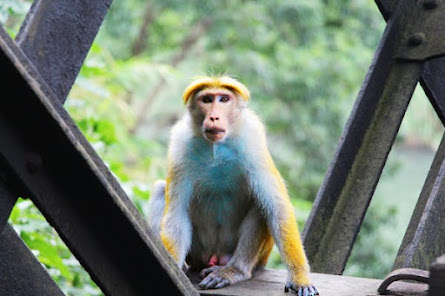Sri Lanka is a land of wonders and surprises, and its wildlife is no exception. With its lush forests and varied terrain, the island is a haven for a diverse array of species, including some of the world's most fascinating monkeys. From the gray and regal Hanuman Langur, to the acrobatic, Purple-faced Langur, Sri Lanka's primates are a marvel to behold. Specially in the religious premises there can be seen so many monkeys roaming freely around the visitors. In this article, I embark on a journey through the lush landscapes of Sri Lanka, discovering the unique and captivating world of its monkey population. So come along and be mesmerized by the intriguing tales of these primates that call Sri Lanka their home.
 |
| Welcome to the Article |
The Gray Langur (Semnopithecus entellus), also known as the Hanuman Langur, is one of the most common species of monkeys found in Sri Lanka. They are easily recognizable by their distinctive gray fur and long tails. Gray Langurs are diurnal animals, meaning they are active during the day, and are known for their social behavior. They live in large groups of up to 50 individuals, with a strict hierarchy dominated by a single male.
 |
| The Gray Langur |
Another species of monkey found in Sri Lanka is the Toque Macaque (Macaca sinica), also known as the Toque Monkey. These monkeys are native to Sri Lanka and are characterized by their reddish-brown fur and distinctive "toque" of hair on their heads. Toque Macaques are also social animals, living in troops of up to 30 individuals. They are omnivores, feeding on a variety of foods including fruit, insects, and small mammals.
 |
| Toque Macaque |
The Purple-faced Langur (Semnopithecus vetulus), also known as the Leaf Monkey, is another species of monkey found in Sri Lanka. As the name suggests, they have a distinctive purple or black face, which sets them apart from other primates on the island. Purple-faced Langurs are arboreal, meaning they spend most of their time in trees, and are known for their agile and acrobatic abilities. They are also highly social animals, living in troops of up to 20 individuals.
 |
| The Purple-faced Langur |


0 Comments